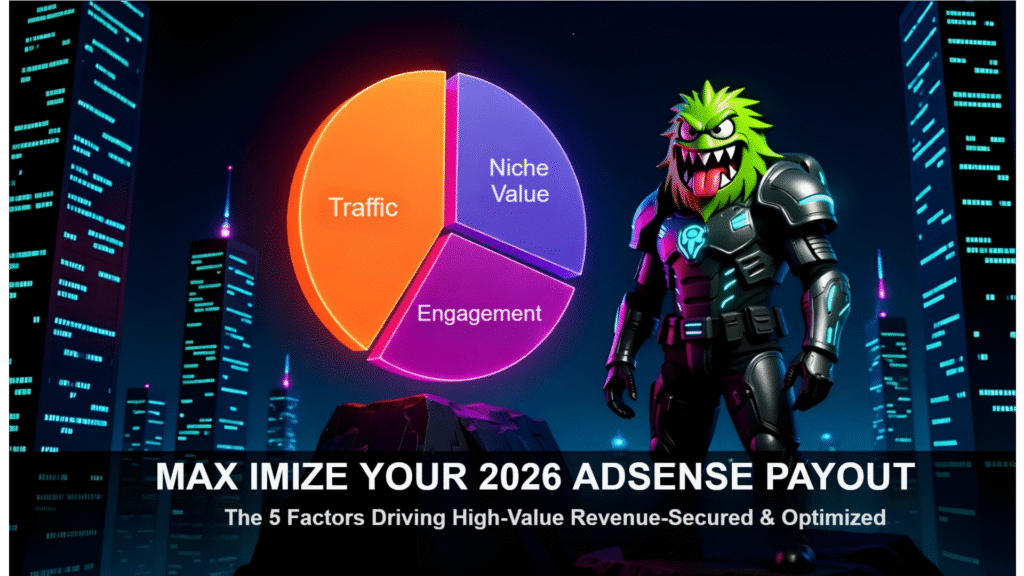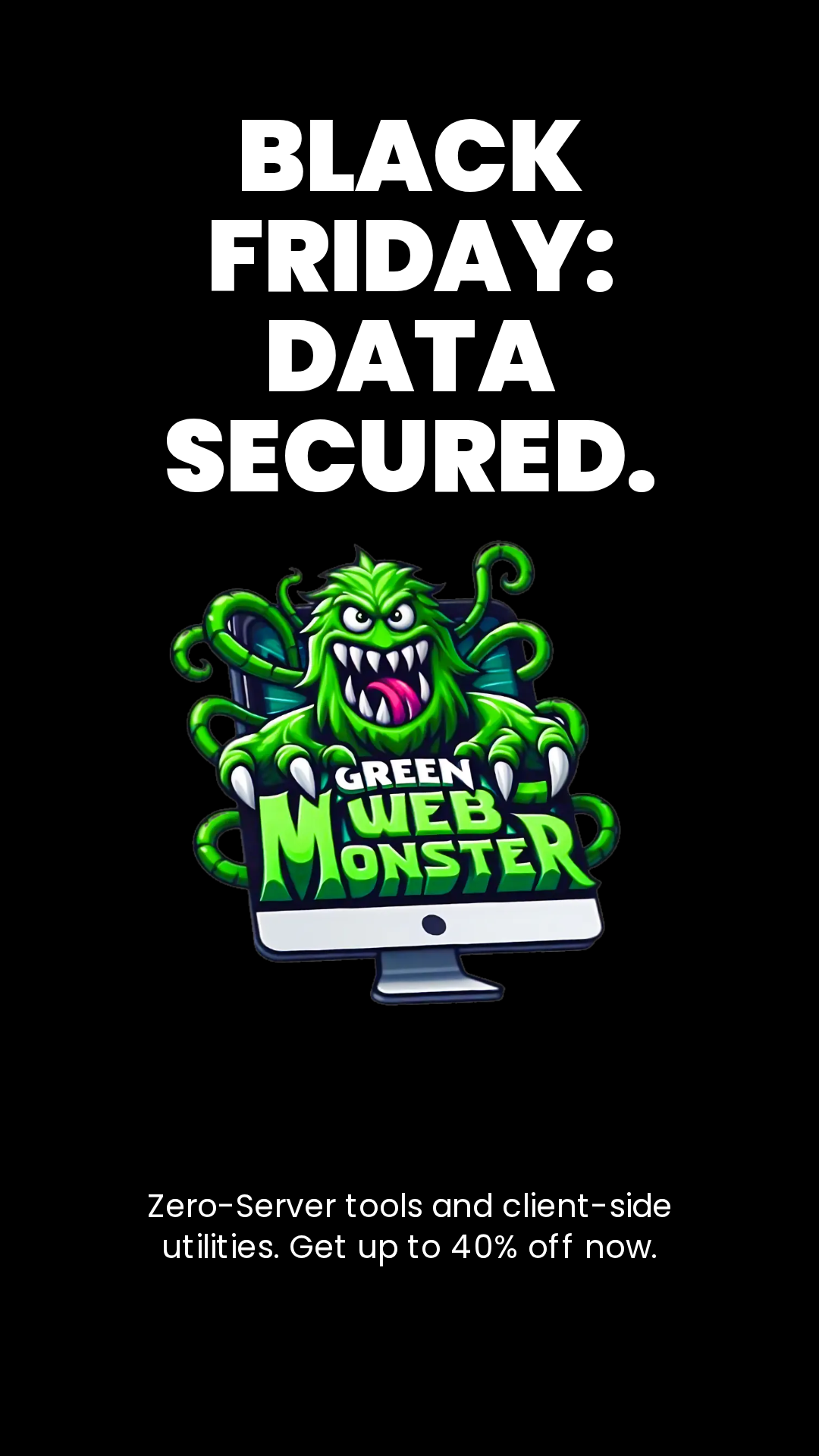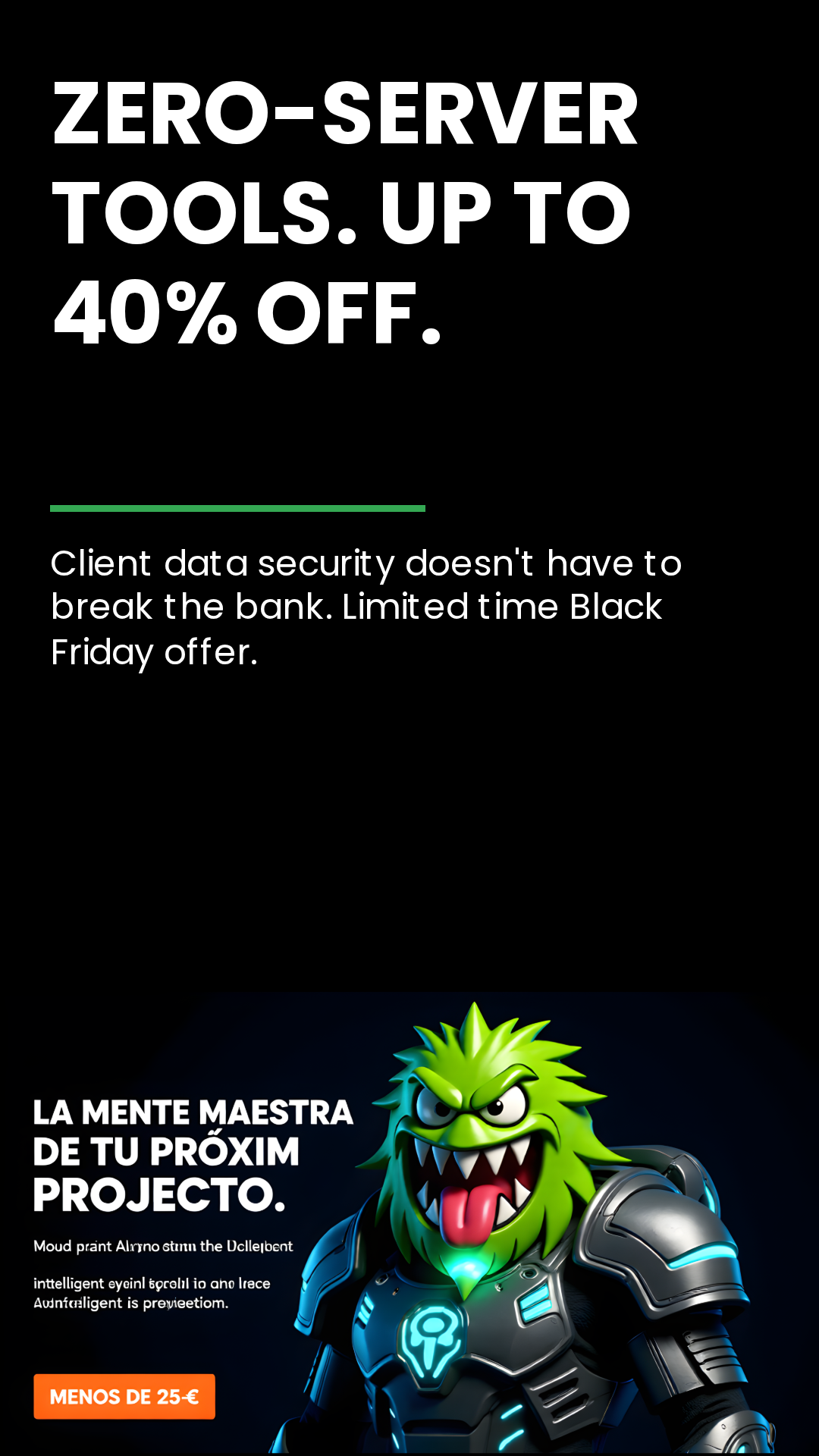Google Gemini Unlocking the Full Potential
Real-world gains and pitfalls
Tap Google Gemini’s multimodal models to automate personalized ads and landing pages, you can see up to 30% lower CPA in tests when combining Gemini with Google Ads and Analytics; a retail pilot halved manual A/B cycles from 4 weeks to 2, boosting conversions 18% in 6 weeks. Push personalized search snippets, dynamic creatives, and real-time chat responses, but watch out: over-reliance on automation can erode brand voice and cause costly errors if you skip human review.
You gotta stop guessing and start dominating with Google Gemini—this no-fluff guide gives you 8 tactical moves to accelerate leads, automate the grind, and scale fast in August 2025. Use Gemini to laser-target ads, automate customer touchpoints, and mine insights so you can win. Act now or risk falling behind; the upside is explosive growth if you execute hard and test relentlessly.
Mastering the Mechanics of Google Gemini
You move faster when you understand how Gemini plugs into your stack: leverage our team’s seamless integration playbook to connect Gemini with Google Ads, Google Analytics, and your CDP, cut manual workflows, and spin up A/B tests in days instead of weeks. Watch for hallucinations in creative drafts and enforce validation steps so your outputs stay clean and actionable.
The Technology Behind Google Gemini
Gemini combines a multimodal Transformer core with retrieval-augmented generation and lightweight on-prem or cloud inference options, so you can feed images, audio, and text into one pipeline. Expect low-latency API calls for real-time personalization and native hooks into Google services; secure data connectors and role-based access keep customer data isolated while you scale.
Key Features and Capabilities
Gemini excels at multimodal understanding, adaptive context handling, and tight Google ecosystem integrations to automate ads, content, and analytics. You get programmatic control via APIs, support for retrieval-augmented responses, and built-in safety layers — monitor model drift with product telemetry. The following list breaks these down.
- Multimodal understanding — processes text, images, and audio in one model.
- Long-context memory — keeps conversation and document context across sessions.
- Retrieval-augmented generation (RAG) — pulls in your documents for factual answers.
- Real-time inference — low-latency responses for chat and personalization.
- API-first design — programmatic controls for automation and pipelines.
- Google Ads & Analytics integration — native connectors for campaign automation.
- Safety filters — moderation and hallucination detection layers.
- Scalability — cloud or hybrid deployment for enterprise loads.
You can map those features to specific business plays: use RAG for accurate product FAQs, push creative variants to Google Ads via API hooks, and reduce support ticket volume with multimodal assistants that triage images and transcripts. The list below gives tactical feature tags you can act on immediately.
- FAQ automation — link product docs to RAG workflows for precise answers.
- Creative variant generation — generate headlines, images, and scripts at scale.
- Lead qualification — real-time scoring and enrichment via integrated signals.
- Monitoring & telemetry — detect model drift and measure conversion delta.
- Data governance — RBAC and encrypted connectors for compliance.
- Campaign orchestration — programmatic pushes to Ads and Analytics.
- Multimodal support — process user images and voice lobs in tickets.
- Fail-safes — human-in-the-loop approvals for high-risk outputs.
Harnessing Google Gemini: Unlocking Its Core Functionality
You tap Gemini’s multimodal models to turn data into action—automate personalized ads, generate landing pages, and pull real-time insights from Google Ads and Analytics. Pair that with our promise of Hassle-Free AI Integration—our team wires Gemini into your stack so you don’t waste cycles on plumbing. Be aware that data privacy, bias, and hallucination risks exist, so you keep humans in the loop while scaling creative and targeting efforts.
The Mechanics of Google Gemini
Gemini processes text, images, and audio through large-context transformer models and exposes them via APIs and Workspace connectors, so you can plug it into pipelines, CRMs, and ad platforms. Use prompt engineering or fine-tuning to align outputs to brand voice; set guardrails and monitoring to catch drift. Our team helps map data flows, authentication, and secure integration so you move fast without breaking reporting or compliance.
Google Gemini Key Innovations Driving Business Applications
Major wins come from real-time personalization, automated creative generation, and deep integration with Google Ads/Analytics that lets you optimize spend and creative continuously. Gemini’s multimodal understanding enables richer customer signals, while built-in safety layers attempt to reduce harmful outputs. Expect big efficiency gains—but also operational risks like model hallucinations and data leakage that you must manage.
Digging deeper, you can have Gemini auto-generate hundreds of ad variants, test headlines, and iterate landing copy based on first-party analytics, routing high-intent leads straight into your CRM for sales follow-up. Combine behavioral signals and creative A/B testing to personalize at scale across thousands of segments, while enforcing access controls, audit logs, and human review to mitigate compliance and accuracy issues.
Transforming Business Outcomes with Google Gemini
You can turn Gemini into a growth engine by automating personalization at scale—auto-generated ads, dynamic landing pages, and real-time audience segments that lower CPA. Integrate with Google Ads and Google Analytics for end-to-end measurement; teams that A/B test Gemini creatives often see double-digit conversion lifts. Monitor model outputs continuously to avoid data drift and privacy leakage during rapid rollouts.
Generating Leads and Boosting Sales
You can spin up 50+ ad variants in minutes, create personalized headlines per audience segment, and auto-build landing pages tied to UTMs so you capture intent faster. Pair Gemini with smart-bidding in Google Ads to prioritize high-LTV prospects; many marketers report a 20%+ improvement in lead quality and faster funnel velocity. Lock down PII before sending data to models to prevent regulatory headaches.

Affordable Graphic Design Services
Solutions for Your Digital Problems
Revolutionizing Customer Service
You can deploy Gemini to handle the top 60% of repetitive queries, auto-triage tickets, and surface agent-ready responses that cut first-response time by up to 50%. Connect Gemini to Gmail and your helpdesk for seamless handoffs, but implement escalation logic so complex issues jump to humans and you avoid costly mistakes from model errors.
For operational depth, set clear confidence thresholds, logging, and human-in-the-loop checkpoints: auto-resolve low-complexity tickets, escalate high-risk ones, and track CSAT, FRT, and ticket volume weekly. A mid-market SaaS client reduced ticket load by ~35% and lifted CSAT ~15% after enforcing strict escalation rules and GDPR-safe data filters-showing how you can scale service while managing compliance and hallucination risk.
Transformative Strategies for Business Growth
Make Gemini the backbone of tactical moves that actually scale: unify marketing, sales, and product data so you can run hyper-targeted campaigns, automate outreach, and iterate faster. Our team with 7+ years of experience guarantees seamless integration into your stack, enabling weekly tests, real-time lift measurement, and rapid creative optimization instead of waiting quarters for results.
Accelerating Revenue Generation
Pair Gemini-driven audience modeling with dynamic creatives and price-testing to capture immediate lift—run A/B experiments across tens of thousands of users, swap offers automatically, and let Gemini predict winners to push the top-performing variants. Expect measurable uplifts; teams typically see 15–25% conversion gains when you close the loop with Google Ads and Analytics for automated bid and budget shifts.
Enhancing Customer Experience
Move CX from reactive to growth-focused by deploying Gemini for 24/7 conversational support, real-time personalization, and automated feedback triage that feeds your CRM. That reduces handle times, surfaces product issues faster, and lets you deliver tailored offers and support flows that increase loyalty and lifetime value.
Integrate Gemini with your helpdesk and catalog to auto-tag tickets, draft summary responses, and serve personalized product recommendations in-chat. An e-commerce client automated FAQs and cross-sells, cutting first-response time by 60% and boosting repeat purchases by 20%; use session transcripts to retrain models monthly for continuous gains.
Supercharging Operational Efficiency
Automate high-volume back-office work—invoice parsing, meeting notes, campaign briefs, and ticket routing—so your team focuses on strategy. You can automate up to 50% of repetitive workflows by connecting Gemini to your APIs and orchestration tools, cutting cycle time and firefighting overhead.
Run pilots on 5–7 highest-impact tasks: automate weekly performance reports, summarize calls, and generate compliance drafts. Pilots often reduce prep time by 70%, remove transcription errors, and drive a 10–30% reduction in operating costs within 3–6 months when paired with monitored, iterative rollout.
Increasing Efficiency and Innovation through Automation
Use Gemini to automate repeatable processes so you can focus on growth—pilot implementations often deliver 30–40% reductions in manual hours for admin, marketing ops, and support. Pair Gemini with your existing Google Workspace and our team (with 7+ years building secure AI integrations) to achieve seamless integration without disrupting production systems.
Automating Routine Tasks and Workflows
Route and triage support tickets, auto-draft emails, and populate CRM fields using Gemini prompts and triggers; teams typically cut response latency from ~8 hours to under 1 hour and automate up to 60% of repetitive tasks. Connect Gemini to Google Sheets, Ads, and Analytics to auto-generate reports, batch ad copy, and push follow-ups without manual handoffs.
Enhancing Team Collaboration and Communication
Auto-summarize meetings, generate action-item lists, and create versioned doc briefs so your team spends less time syncing and more time shipping—companies report up to a 25% drop in recurring meeting time and a visible lift in sprint throughput. Keep collaboration centralized by linking Gemini outputs into Slack, Docs, and your project tracker.
In one SaaS example, Gemini-powered meeting summaries cut weekly syncs from 3 hours to 90 minutes and increased sprint completion by 18%; you can replicate this by tying Gemini to Calendar + Slack + Jira and enforcing simple prompts for summary format, owners, and due dates. Watch for over-automation risks—set guardrails and data governance to prevent leaked PII or hallucinated action items and run human QA on critical handoffs.
Empowering Decision-Making with Data Insights
Stop guessing and let Gemini stitch Google Analytics, Google Ads, CRM, and product telemetry into real-time insights so you can act fast—think dashboards that cut time-to-insight from days to minutes. You’ll spot revenue leaks, validate experiments, and push budget to winning channels; in our integrations (7+ years building AI-driven analytics) clients moved from reactive firefighting to proactive growth playbooks that scale.
Gathering Actionable Data and Trends
Use Gemini to ingest cohorts, 7- and 30-day retention, LTV, churn, and top-performing keywords, then surface trends like a sudden 15% drop in activation or a weekly channel spike. Run automated weekly reports on 30+ metrics, segment by behavior or demographic, and export clean datasets for A/B tests—one SaaS client found a 3-day onboarding friction that, once fixed, lifted retention by 12%.
Utilizing Insights to Make Strategic Choices
Translate signals into moves: shift 20–30% of ad spend to high-LTV cohorts, pause underperforming creatives, or launch targeted win-back flows. Gemini’s scenario outputs let you forecast outcomes so you can reallocate budgets with confidence and chase the fastest ROI—expect to reduce CAC and improve conversion velocity when you act on the data.
Operationally, you should set concrete KPIs, wire up Gemini to your data warehouse, and run rolling 90-day forecasts with at least two scenarios (baseline vs. aggressive). Automate cohort breakdowns daily, A/B test the top 3 hypotheses Gemini suggests, and implement a feedback loop where model recommendations inform product roadmaps and ad budgets. For example, a retailer reallocated $8k monthly to video after Gemini flagged higher engagement in a 25–34 cohort and saw a 15% ROAS uplift in 30 days; keep that playbook—measure, iterate, scale.
Fostering Creative Innovation Through Gemini
Ideation and Concept Development
You can push past creative blocks by using Gemini to generate and triage ideas fast — prompt it for 50 concept variations, then filter to the top 5 based on customer persona fit and business KPIs. Use data-driven prompts that include metrics (LTV, CAC) so Gemini prioritizes ideas with real revenue potential, not just cleverness.
Product Design and Service Improvement
Use Gemini to produce rapid wireframe copy, feature lists, and user-flows; push multiple UX directions in parallel so your team can compare outcomes side-by-side. Connect outputs to Figma or your prototyping tool to turn words into clickable mocks and run micro-tests with defined cohorts — iterate faster, fail cheaper.
Operationally, run 3–5 targeted experiments per sprint: generate 5 headline/copy variants, map 4 alternate flows, and simulate user paths for each. Feed Gemini anonymized analytics (session lengths, drop-off points) to surface the top optimizations — teams routinely cut iteration cycles from weeks to days by automating hypothesis generation and test scaffolding.
Crafting Compelling Marketing Narratives
You can scale brand storytelling by asking Gemini for persona-specific narratives, multi-channel snippets, and 10 headline/subject-line variants per campaign. Combine performance goals (CTR, conversion target) in the prompt so outputs are optimized for metrics, and flag any copy that risks voice inconsistency — personalization at scale wins attention.
For execution, A/B test 10–20 Gemini-generated headlines across email and paid channels, instrument variant tracking, and measure lifts in CTR and conversion. Keep a brand-voice style sheet inside prompts to prevent drift, and use Gemini to produce short-form social hooks, three ad lengths, and one long-form landing narrative — that supply chain turns one idea into a measurable campaign in hours.
Outpacing Competitors with Agile Strategies
You use Google Gemini to move faster than rivals: automate market scans, push reactive ad swaps in hours, and A/B test headlines across channels. Integrate Gemini with Google Ads and Analytics and let our team with 7+ years of AI and blockchain experience handle seamless deployment so you can focus on execution. Tight feedback loops turn insights into action—giving you a first-mover advantage while forcing competitors to play catch-up.
Monitoring Industry Developments
Have Gemini monitor news, forums, social signals, and patent filings so you get alerts the minute a trend shifts; set filters to flag regulatory updates, sudden ad-volume spikes, or influencer buzz. You’ll spot threats like competitor ad surges and opportunities like underserved niche topics, enabling you to react in minutes instead of days.
Identifying Opportunities and Threats
Feed Gemini your CRM, Google Analytics, and ad metrics to surface patterns—rising intent keywords, falling competitor engagement, or product gaps in reviews—and prioritize moves with a scoring model. Use these signals to decide whether to ramp creatives, adjust bids, or pursue a partnership; the model turns noisy data into a clear playbook for you.
Dig deeper by training custom classifiers on your historical wins and losses: label 1,000+ past campaigns to teach Gemini what success looks like, set sentiment thresholds, and tie alerts to automated rules in Ads. In practice, a retail client spotted a competitor discount surge, shifted 20% of budget to defensive offers, and recovered share within 72 hours—proof that structured signals plus rapid execution pay off.
Crafting Dynamic Competitive Strategies
Let Gemini generate rapid counterplays—dynamic creatives, bid reallocation, and landing-page swaps—based on live signals. Create playbooks for price moves, product launches, and PR crises so Gemini can suggest and simulate outcomes; that way you stay offensive while limiting downside from reactive churn.
Operationalize this by building 3-tiered playbooks: monitor (signals and thresholds), respond (automated creatives, budget rules, and outreach templates), and measure (real-time KPIs fed back into the model). Connect Gemini to your ad accounts and CRM, run experiments across 2–3 audiences, and let automated rules shift ~10–25% of spend to winners—so you’re always iterating faster than competitors. Failing to automate these steps leaves you reacting slowly; automating them wins market share.

Data-Driven Decision-Making with Google Gemini
Gemini fuses Google Analytics, Ads, CRM and BigQuery to surface actionable signals in minutes, letting you pivot campaigns or inventory fast. Teams cut analysis time by up to 70% in pilot programs and spot micro-segment shifts that increase ROI. Watch for data-silo errors—left unchecked they can produce misleading conclusions.
Insight Generation from Data Analysis
Gemini turns raw metrics into ranked insights: anomaly detection, correlation scoring and prioritized recommendations. You feed in GA, CRM and recent ad data, and Gemini flagged a 22% drop in add-to-cart rate within 48 hours for one client, prompting a creative swap that recovered 15% conversion. Use the ranked list to focus the top three actions per day.
Identifying Market Trends for Strategic Decisions
Gemini monitors search volume, social sentiment and sales velocity to flag emerging trends—seasonal spikes, product interest shifts and geo hotspots. It detected a regional rise in organic skincare searches three weeks before a seasonal surge, letting a retailer increase stock and capture an extra 12% revenue during the window. Validate trends across sources to avoid chasing noise.
Dig deeper by running cohort-based forecasts and sentiment-weighted trend scores: combine Google Trends, first-party purchase graphs and social listening to create a trend confidence metric. Automate SKU prioritization—shift up to 30% of planned stock toward high-confidence items and set automated bids for rising queries. Guard against sampling bias: if your social feed skews urban, reweight inputs or Gemini will push strategies that underperform in other regions.
Leveraging AI for Informed Business Choices
Use Gemini to run scenario simulations and ROI projections before you commit spend: run 1,000 simulated budget allocations to see projected CPM, CPA and revenue outcomes. One advertiser reallocated 25% of budget to Gemini-recommended creatives and saw an 18% lift in conversion over 14 days. Turn recommendations into clear, measurable actions.
Integrate Gemini outputs into your decision workflow: push top recommendations to dashboards, require human approval for moves over a set threshold (for example, >15% budget change), and log outcomes for continuous learning. Our team ensures seamless integration with Ads APIs and BI tools so you can automate A/B rollouts, rollback triggers and enforce privacy guardrails—mask PII before modeling and monitor model drift to avoid costly errors.

Expanding Horizons: Tapping into New Markets
Push past domestic ceilings by using Gemini to mine search trends, local intent signals, and competitor ad spend—identify markets where search volume grows >30% year-over-year and CPCs are below your current benchmark. You should prioritize 2–3 markets, localize creatives and landing pages, and run short 2–4 week pilots to validate conversion lift before scaling. Gemini’s integration with Google Analytics and Ads lets you map demand to cost and predict ROI faster than manual research.
Researching and Identifying New Opportunities
Use Gemini to run rapid market scans: extract top queries, demographic segments, and ad gap analysis, then cross-reference with Google Analytics sessions by region. Launch micro-tests with 3–5 creatives and a tiny budget—5–10% of your monthly ad spend—to measure CPA and early LTV signals. You’ll spot markets with low acquisition cost but high retention potential within weeks, not months.
Providing Customer Support Across Borders
Deploy Gemini-powered multilingual agents to handle Tier‑1 queries 24/7 in priority languages and automatically escalate complex issues to your human team. Start by covering the top 10 languages, use intent routing to reduce triage time, and monitor sentiment to flag churn risk. You can cut initial response times by up to 60% while keeping costs down, but watch data residency and privacy rules when routing messages across borders.
Integrate Gemini directly with your CRM and ticketing (Zendesk/HubSpot) so you auto-populate tickets, surface past interactions, and feed resolved intents back into training loops. Our team ensures seamless integration into your stack—handling auth, workflows, and scaling—backed by 7+ years building AI-driven solutions. In one case, a SaaS client cut average handle time from 12 to 4 minutes and raised CSAT from 72% to 89% after deploying Gemini agents plus human escalation. Maintain localized KBs and translation memories to avoid mistranslations that erode trust.
Staying Competitive in a Rapidly Evolving Landscape
Monitoring Industry Developments
Use Gemini to ingest Google News, RSS, patent filings and competitor ad feeds, then surface anomalies—like a 20% month-over-month spike in competitor CPCs or a sudden drop in your conversion rate. Tie alerts into Google Analytics and Google Ads, watch search volume shifts, and monitor sentiment on social and forums so you see the signal before everyone else chases it.
Uncovering Opportunities and Evaluating Threats
Gemini clusters customer reviews, ad performance and trend data to reveal high-potential niches or risk vectors, e.g., a keyword cohort hitting 5x growth in search interest or rising supplier complaints. You get ranked opportunities and threats with projected impact scores so you know what to prioritize first.
Run monthly scans where Gemini compares your top 50 keywords, top 10 competitors and supplier mentions; it can estimate revenue impact per signal—for instance, a micro-trend alert predicting a +15% revenue uplift if you launch a targeted campaign within 30 days. Push those signals into your CRM and automate experiments so opportunities become tested plays, not vague ideas.
Proactive Strategy Development to Maintain Edge
Automate scenario planning with Gemini: simulate price moves, creative swaps and budget shifts across 100 rollout scenarios to identify the best path. Reserve a growth bucket—typically 10% of ad spend—for high-upside tests, and let Gemini’s A/B recommendations collapse weeks of manual work into days so you scale winners fast.
Structure a monthly sprint where Gemini proposes three experiments, predicts KPIs, and you run the top one with an automated playbook tied to Ads and Analytics. That loop shortens decision latency and can cut time-to-market by up to 30%, giving you the first-mover advantage while others catch up.
Elevating Your Digital Presence through Google Gemini
Leverage Gemini to turn scattered pages into a cohesive digital storefront: generate 5–10 headline variants, produce SEO-ready meta descriptions, and auto-create FAQ schema for rich snippets. Pair Gemini outputs with your Google Analytics and Ads data so you can A/B test in-market assets fast. Our team ensures seamless integration and, with 7+ years of experience, you get implementation that ties Gemini into your stack without breaking workflows.
Creating Compelling Website Content
Ask Gemini to write short, punchy product descriptions, 300–500 word landing pages, and localized copy that matches intent signals; generate 4–6 tone variants and run rapid A/B tests to see which converts. You control brand voice, you iterate weekly, and you use Gemini to scale content production without losing personality—ship one new high-impact page per week and iterate based on engagement metrics.
Optimizing for Better Search Engine Visibility
Combine Gemini’s keyword intent mapping with your Google Ads and Analytics data to prioritize pages that move the needle: target low-competition, high-intent queries, optimize title tags, and add JSON-LD FAQ or product schema to capture rich results. Track three KPIs—organic sessions, click-through rate, and average session duration—to measure impact and justify reallocating ad spend into organic growth.
Go deeper: have Gemini generate technical SEO tasks—canonical tags, compressed image alt text, optimized meta robots, and crawl-priority suggestions—then run fixes to hit Core Web Vitals targets like LCP under 2.5s. Automate routine audits, surface exact line-item fixes for dev sprints, and use Gemini to draft PRs and release notes so your team ships improvements faster.
Exploring New Territories: Market Expansion Strategies
Jump into adjacent countries or niche segments using Google Gemini to validate demand, price sensitivity, and competitor saturation before you spend a dime. Run 30-day trend scans, compare average monthly search volume and CPC, and prioritize markets where projected CAC falls <30% above current benchmarks. Companies that test with micro-budgets often unlock 15–25% incremental revenue in six months—so scale where Gemini shows clear signal, not hope.
Researching Viable Markets with AI Assistance
Tell Gemini to pull keyword trends, regional search volumes, and ad competitiveness; filter for regions with >10,000 monthly searches and <$2.00 estimated CPC, then cross-check local social sentiment and the top five competitors. Run Gemini’s scenario modeling to forecast 30/60/90-day revenue at different spend levels and flag markets with low barrier to entry or heavy regulatory risk.
Customizing Customer Support for Diverse Markets
Localize support scripts and SLAs using Gemini’s multilingual models so you answer in customers’ native language within your target SLA—aim for first-response under 1 hour for high-value markets. Add local payment and return policies into bot flows, route complex issues to regional specialists, and track CSAT by market to spot drop-offs fast.
Implement a phased rollout: start with the top three languages covering ~80% of ticket volume, train Gemini on the past 12 months of transcripts for tone and compliance, and set escalation triggers for sentiment scores below 0.2 or refund requests over $100. Measure CSAT, NPS, and average handle time weekly; teams that do this typically cut escalations by 40% within 90 days.

FAQ
Q: How can Google Gemini help me generate leads and increase sales?
A: Use Gemini to create hyper-targeted ad copy, headlines, display creatives and landing page text tailored to audience segments identified from Google Analytics and Ads data. Feed Gemini audience signals (demographics, interests, behaviour) and ask it to produce 3–5 ad variants and matching landing-page hooks. Implement lead-scoring rules in your CRM using Gemini’s predicted intent signals, automate personalized nurture sequences (emails, SMS, in-app messages) that adjust based on engagement, and run rapid A/B tests on creative and offers. Track conversion lift, cost per acquisition (CPA) and downstream revenue to iterate on winning combinations.
Q: What are the practical steps to integrate Google Gemini into my existing systems without disruption?
A: Start with a lightweight pilot: identify one high-impact use case (ads, support, content). Audit data sources (GA4, Google Ads, CRM, Helpdesk, Workspace) and map where Gemini will read/write. Use Google Cloud or Workspace connectors and APIs to set secure data pipelines, apply least-privilege access and logging, and anonymize PII where required. Create a staging environment, deploy a small model-driven workflow, gather performance and safety signals, then expand scope. Establish governance: versioning, prompt libraries, human-in-the-loop escalation rules and scheduled model audits. Monitor costs, latency and user feedback, then scale incrementally.
Q: How can Gemini improve customer service and reduce response times while keeping quality high?
A: Deploy Gemini as a first-line assistant to triage incoming tickets, propose concise replies, and surface relevant knowledge-base articles. Configure intent classification and sentiment detection to prioritize urgent issues and route complex cases to human agents with a summarized context and suggested next steps. Use Gemini to draft follow-up emails, post-resolution surveys and knowledge-base updates. Continuously feed resolved tickets back into the system to refine suggestions and reduce repeated work. Measure average handle time, first-contact resolution and CSAT to ensure quality stays high.
Q: In what ways can Gemini boost team productivity and creativity across marketing and product teams?
A: Automate repetitive tasks (drafting briefs, meeting notes, email templates, content outlines, SEO meta tags) to free time for higher-value work. Use Gemini for creative ideation: prompt it for campaign concepts, social-post series, product feature hypotheses and PR angles, then iterate rapidly with short experiments. Generate multiple copy and asset variants for A/B testing, produce data-driven content briefs using search and analytics insights, and integrate with Docs, Sheets and Calendar for collaborative workflows. Keep a prompt template library so teams reproduce reliable outputs quickly.
Q: How should I measure and optimize ROI when using Gemini for marketing, site optimization and ads in August 2025?
A: Define primary KPIs (revenue, conversions, CPA, LTV) and instrument tracking across GA4, Google Ads and your CRM. Run controlled experiments: use Gemini-generated creatives and landing pages in split tests and compare conversion lift and cost metrics versus control. Use conversion attribution and cohort analysis to link Gemini-driven activities to downstream revenue and retention. Monitor signal drift and campaign performance weekly, apply Gemini to generate optimized variations based on winning patterns, and incorporate automated bidding adjustments. Report ROI as incremental revenue attributable to Gemini workflows after accounting for tooling and operational costs.
Optimizing Your Digital Presence
Run targeted audits with Google Gemini to map high-value pages, spot drop-off points, and prioritize fixes that drive revenue; you can surface quick wins like compressing images, fixing broken CTAs, or personalizing hero copy for top segments. Integrate Gemini outputs with Google Ads and Analytics to turn insights into A/B tests and scaling decisions, and watch conversion lift and ad spend efficiency improve while avoiding the danger of misconfigurations that waste budget.
Content Creation for Engagement and SEO
Use Gemini to generate 10 localized blog outlines, meta descriptions, and FAQ blocks in minutes, then refine for E-E-A-T and keyword intent to boost organic CTR; teams that adopt this workflow report content velocity increases of 3–5x. Push Gemini prompts for schema-ready snippets and social hooks so you get higher engagement and fewer reworks, but audit output to avoid thin content penalties.
Enhancing Website Performance Through Analytics
Feed Gemini site telemetry and GA4 funnels to identify the top 3 pages costing conversions, then let it recommend prioritized experiments—page speed fixes, checkout simplification, or targeted messaging. You’ll turn raw data into action lists that reduce friction, improve session depth, and deliver measurable KPIs like lower bounce and higher revenue per visit; flag any data-tracking gaps that could lead to wrong decisions.
Drill deeper with cohort analysis and funnel breakdowns: have Gemini generate hypotheses, sample sizes, and suggested A/B variants, then set automated alerts for KPIs. Use proven benchmarks—Google shows >50% mobile abandonment after 3s load—and aim for sub-2s load times to protect conversion rates; mis-tagged events or missing goals can silently cost you thousands in wasted ads, so validate tracking before scaling winners.
Final Words
Following this, you’ve got a playbook — use Gemini to generate leads, automate workflows, sharpen ads, improve service, spark creativity, and make faster decisions; test, iterate, and scale relentlessly; stop waiting for perfection, deploy small bets, track metrics, and double down on what moves the needle for your business in August 2025.























![[Artistly Design] 019a17a8-e325-731c-bbf3-a3ecdcf9b9b4](https://greenwebmonster.com/wp-content/uploads/2025/11/Artistly-Design-019a17a8-e325-731c-bbf3-a3ecdcf9b9b4.png)
![[Artistly Design]-019a69cc-06fb-7205-a4d1-29b753e4c824](https://greenwebmonster.com/wp-content/uploads/2025/11/Artistly-Design-019a69cc-06fb-7205-a4d1-29b753e4c824-2.webp)
![[Artistly Design]-019a69cc-06fc-72f0-bb8c-66b8ea162c6d](https://greenwebmonster.com/wp-content/uploads/2025/11/Artistly-Design-019a69cc-06fc-72f0-bb8c-66b8ea162c6d-3.webp)
![[Artistly Design]-019a69cc-06fc-72f0-bb8c-66b8eaf1c613](https://greenwebmonster.com/wp-content/uploads/2025/11/Artistly-Design-019a69cc-06fc-72f0-bb8c-66b8eaf1c613-3.webp)
![[Artistly Design]-019a69cc-06fc-72f0-bb8c-66b8eb708f8f](https://greenwebmonster.com/wp-content/uploads/2025/11/Artistly-Design-019a69cc-06fc-72f0-bb8c-66b8eb708f8f-4.webp)
![[Artistly Design]-019a778e-8f7b-7127-b987-be3eef6e84d4](https://greenwebmonster.com/wp-content/uploads/2025/11/Artistly-Design-019a778e-8f7b-7127-b987-be3eef6e84d4-2-scaled.webp)



